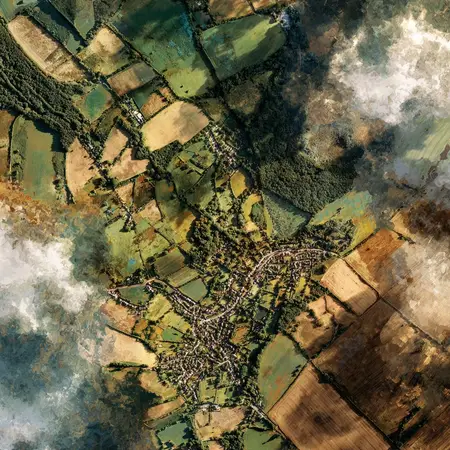Every town and village has its own rhythm of growth. For centuries, new homes appeared in small, almost imperceptible steps — a cottage added at the end of a row, a pair of houses built where the lane widened, or a small dwelling replacing an older one in poor repair. This slow pace meant that each change could be absorbed without disruption. The settlement adapted naturally, like a tree adding rings you barely notice until years have passed.
In recent decades, that rhythm has often been replaced by two extremes: large housing estates arriving in a single sweep, or long periods of complete inaction. Both break the continuity of a place. In one case, the scale of change overwhelms the existing character; in the other, the absence of growth can gradually erode vitality.
There is another path: incremental development. This is the steady addition of small, well-placed clusters of homes that feel as if they have grown from the place itself. It is a way of building that takes its cues from the lie of the land, the materials already weathering in nearby walls, and the subtle patterns of daily life — the way light moves across a field, or how a path curves to avoid an ancient tree.
This kind of growth works best where there is already a grain to follow: the bend of a road, the dip of a slope that can shelter a roofline, or the edge of an orchard that can give way to gardens. Each new building is part of a continuing story, responding to what is already there rather than imposing something alien.
At Livedin, we have spent over 20 years designing for these moments. Our projects often involve sites that are overlooked — too small, too complex, or sitting just beyond a mapped development boundary, making them unappealing to large developers. We bring together the technical skill to navigate planning with the architectural sensitivity to make each building belong.
Many of the homes we design in this way are self-builds, created by the people who will live in them. This brings an attention to detail and a personal investment that is hard to replicate. You can see it in the way a window is placed to catch the evening light, or how a garden path is laid to preserve the roots of an old tree.
When a settlement grows through such careful additions, it retains its identity. The new is woven into the old, not stitched on as an afterthought. The result feels inevitable — as though it has always been there — and will continue to feel part of the place fifty years from now.
If you have land that could be part of this kind of story, we can help shape it. Because when you build with care, you are not simply adding houses; you are helping the place itself to grow.

